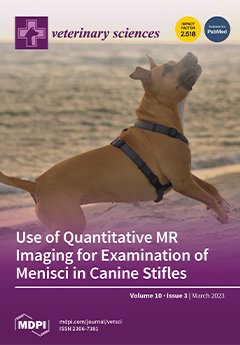Activation of the AMP-activated protein kinase (AMPK) has been demonstrated to be beneficial for boar sperm quality and functionality, while the underlying mechanism of AMPK activation of boar spermatozoa remains obscure. This study aimed to explore the effect of antioxidants and oxidants in boar spermatozoa and their surrounding fluid (SF) on the activation of AMPK during the liquid storage. Ejaculates from Duroc boars, routinely used for semen production, were collected and diluted to a final concentration of 25 × 10
6/mL. In experiment 1, twenty-five semen samples from eighteen boars were stored at 17 °C for 7 days. In experiment 2, three pooled semen samples created from nine ejaculates of nine boars were used, and each sample was treated with 0, 0.1, 0.2, and 0.4 μM/L H
2O
2 and stored at 17 °C for 3 h. Sperm quality and functionality, antioxidants and oxidants in boar spermatozoa and SF, the intracellular AMP/ATP ratio, and the expression levels of the phosphorylated AMPK (Thr172) were determined. Sperm quality significantly decreased with storage time in terms of viability (
p < 0.05). Antioxidant and oxidant levels were markedly affected with storage time, with a decline in the SF total antioxidant capacity (TAC) (
p < 0.05), SF malondialdehyde (MDA) (
p < 0.05), and the sperm’s total oxidant status (TOS), as well as a fluctuation in sperm superoxidase dismutase-like (SOD-like) activity (
p < 0.05). The intracellular AMP/ATP ratio increased (
p < 0.05) on day 4 and subsequently decreased to its lowest value on days 6 and 7 (
p < 0.05). The phosphorylated AMPK levels increased from day 2 to day 7 (
p < 0.05). Correlation analyses indicate that sperm quality during liquid storage was correlated to antioxidants and oxidants in spermatozoa and SF (
p < 0.05), which were correlated to the phosphorylation of sperm AMPK (
p < 0.05). Treatment with H
2O
2 induced damages in sperm quality (
p < 0.05), a decline in antioxidant levels (SF TAC,
p < 0.05; sperm SOD-like activity,
p < 0.01), an increase in oxidant levels (SF MDA,
p < 0.05; intracellular ROS production,
p < 0.05), a higher AMP/ATP ratio (
p < 0.05), and phosphorylated AMPK levels (
p < 0.05) in comparison with the control. The results suggest that antioxidants and oxidants in boar spermatozoa and SF are involved in AMPK activation during liquid storage.
Full article






